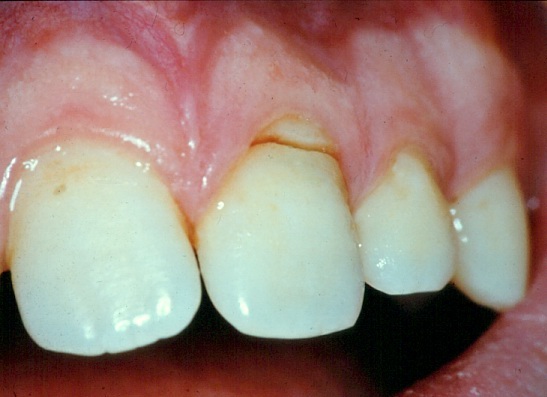Crown-root fracture


CROWN-ROOT FRACTURE
In some cases the fragments can be splinted with composite using the acid etch technique. However the prognosis is rather doubtful. In fractures communicating with the oral cavity, periodontal breakdown and pulp necrosis are most likely to occur. Thus, with most crown-root fractures, the treatment is to remove the loose fragment or fragments. Any pulpal involvement must be determined. Further treatment depends upon how deeply the fracture extends on the root surface. The goal is to create a situation, where the tooth can be restored after removal of the coronal fragment. If the root portion is of sufficient length, one of the following procedures is suggested:
Fragment removal and gingival reattachment
Fragment removal and surgical exposure of subgingival fracture
Fragment removal and and orthodontic extrusion
Fragment removal and surgical extrusion
The choice between these four treatments should be discussed with a specialist in orthodontics and an oral surgeon.
In mature teeth where the apex is closed, partial pulpotomy or pulpectomy, depending on the local situation, are the preferred choices of endodontic treatment when the pulp is exposed.
Follow-up:
All traumatized teeth are carefully observed for clinical and radiographic signs of complications. The intervals between
re-examinations should be individualised depending upon the severity of traume, the expected type of complication and the age
of the patient. A negative response to pulp test must be accompanied by other clinical and/or radiographic signs before necrosis
can be diagnosed. If pulpal necrosis develops, endodontic therapy is performed.